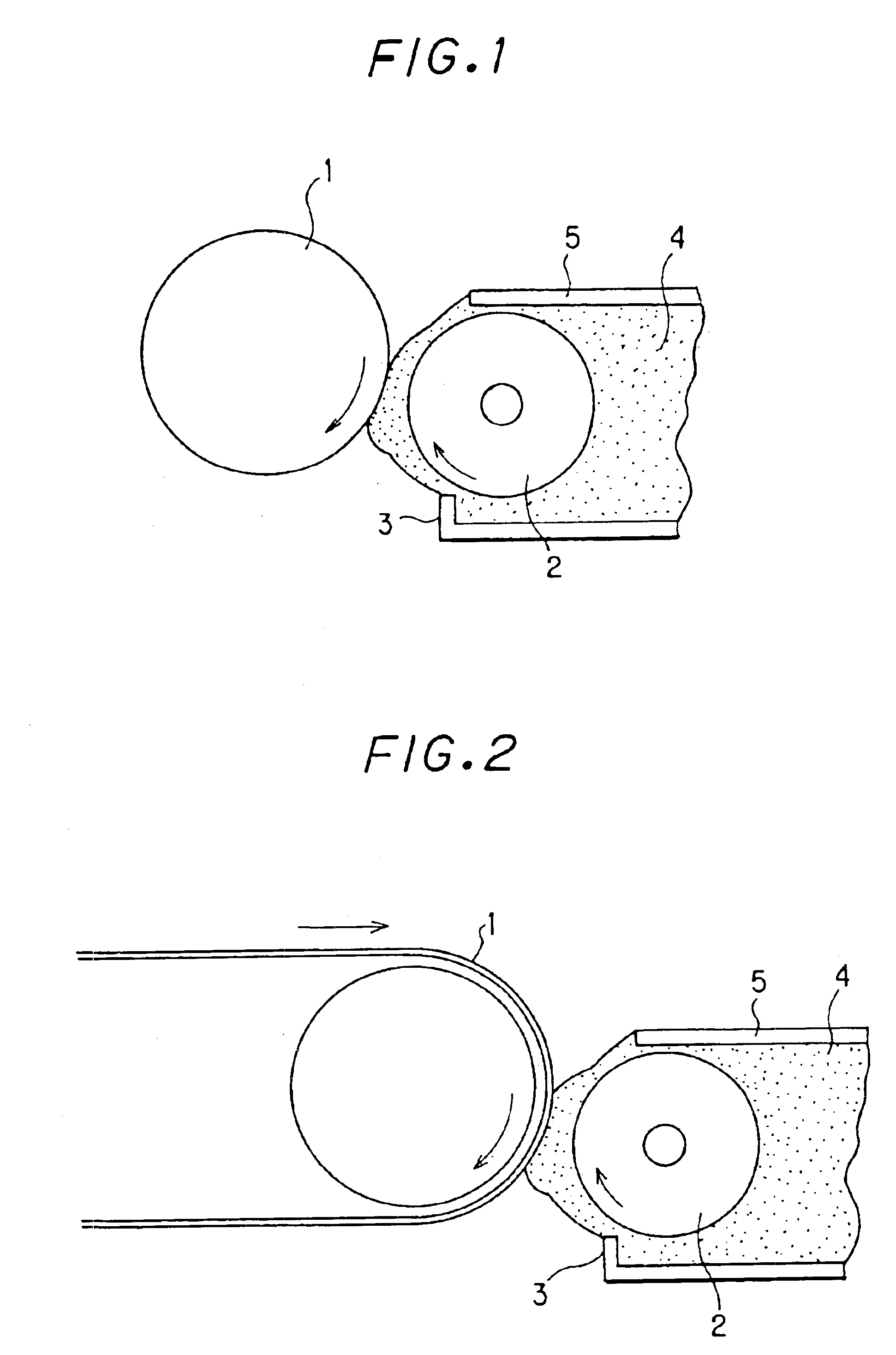Electrophotographic developer and image-forming method using the developer
- Summary
- Abstract
- Description
- Claims
- Application Information
AI Technical Summary
Benefits of technology
Problems solved by technology
Method used
Image
Examples
examples
The present invention shall specifically be explained below with reference to examples.
Judging methods and judging criteria for the image density, the background density, toner scattering and carrier flying which were carried out in the following examples were carried out according to Table 1.
In this case, the image density shown in Table 1 was measured by means of a reflection densitometer (manufactured by Macbeth Co., Ltd.), and the background density was judged by measuring by means of a whiteness meter (manufactured by Nippon Denshoku Kogyo. Co., Ltd.). Toner scattering was evaluated by visually observing the degree of contamination caused by the toner in a mass part under a developer-feeding port in a developing bath. Carrier flying was judged by catching the toner on the electrostatically charged-image holder by means of a pressure-sensitive tape to count the number thereof (number / cm2).
Blending mass part or percentage is based on mass.
TABLE 1EvaluationJudging criteriaItemsJud...
example 2
A developer was obtained in the same manner as in Example 1, except that Toner B was used, and the same copying test was carried out. The respective evaluation, items were judged according to the judging criteria shown in Table 1, and the results thereof are shown by every environmental condition in Tables 3 to 5.
The stable results were shown to the image density, the background density, toner scattering and carrier flying on every environmental condition from the beginning through the life end (in copying 20,000 sheets).
example 3
Toner A and a ferrite carrier I which was coated on a surface with an acryl-modified silicon resin and which had a weight average particle diameter of 9.5 μm were mixed for 15 minutes by means of the Nauter mixer so that the toner concentration became 5%, and the resulting developer was charged into a copying machine (a photoreceptor and a developer carrier rotate in directions reverse to each other in a developing area to carry out development) in which a head distance of the developer was controlled to 0.6 mm and a photosensitive belt had a radius of curvature of 18 mm in a developing area where the photosensitive belt was disposed oppositely to a developer carrier, in which the developer carrier had a radius of curvature of 12 mm and in which a minimum proximity distance between the photosensitive belt and the developer carrier was 0.8 mm and a ratio of a peripheral speed of an developer carrier to a peripheral speed of the electrostatically charged-image holder was 2.5, and copy...
PUM
 Login to View More
Login to View More Abstract
Description
Claims
Application Information
 Login to View More
Login to View More - R&D
- Intellectual Property
- Life Sciences
- Materials
- Tech Scout
- Unparalleled Data Quality
- Higher Quality Content
- 60% Fewer Hallucinations
Browse by: Latest US Patents, China's latest patents, Technical Efficacy Thesaurus, Application Domain, Technology Topic, Popular Technical Reports.
© 2025 PatSnap. All rights reserved.Legal|Privacy policy|Modern Slavery Act Transparency Statement|Sitemap|About US| Contact US: help@patsnap.com

